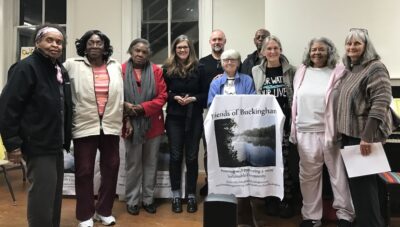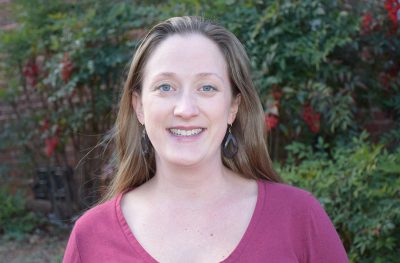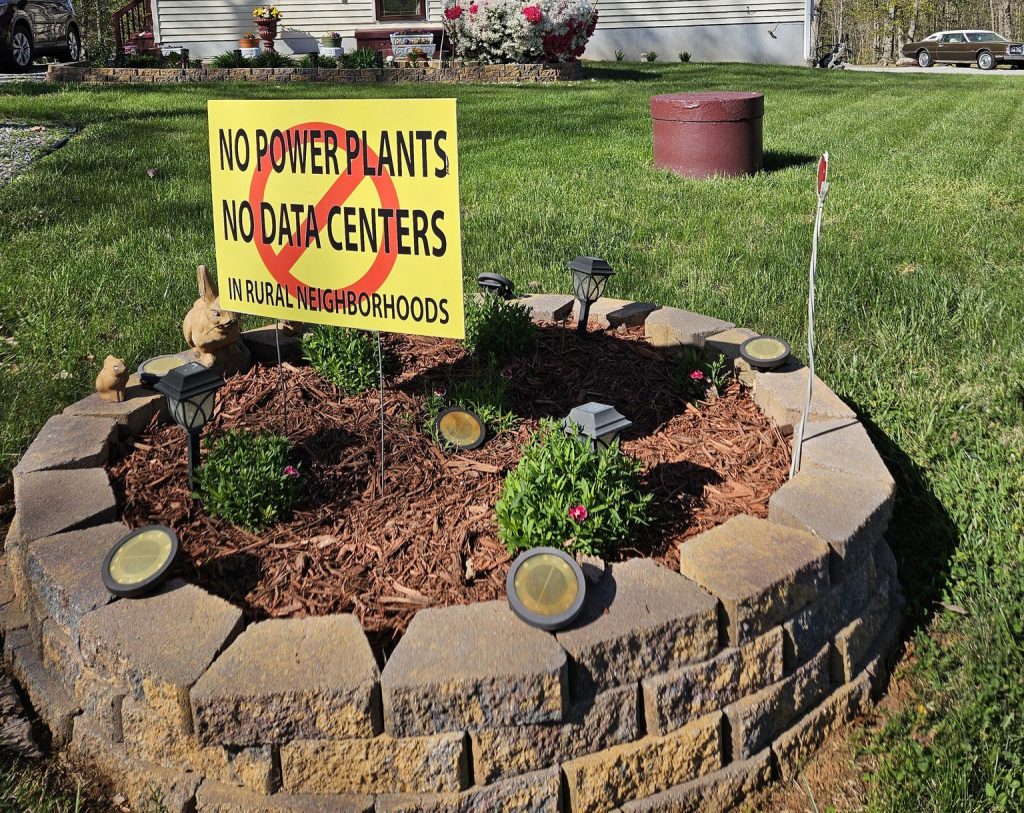Clean Energy That Leaves No One Behind
Renewable energy is better for the environment but, like all technology, it is not inherently fair or just. Creating an equitable energy system takes deliberate intervention by decision-makers and advocates.
To better understand the relationship between equity and clean energy, we sat down with Kate Boyle, deputy executive director of Appalachian Voices, the nonprofit advocacy organization that also publishes this newspaper.
What does “equity” mean when we are talking about renewable energy and energy efficiency?
Kate: It means no one is left out — everyone should be able to access the benefits of clean energy. But equity will not be achieved unless policies and programs are designed properly. We can look at solar energy, for example, and ask, “Why aren’t more low-income communities benefiting from solar?” The answer could be that programs in that community are only available to homeowners or because the only financing programs available require a lot of cash up front.
An equitable energy system also means that no group of people bears a disproportionate burden of the impacts of energy, such as health problems caused by air and water pollution. Communities that have borne the greatest impact should have the necessary resources to diminish or eliminate the harm being caused, as well as make investments in clean energy and other programs that will generate wealth, jobs and make their communities healthier and more prosperous moving forward.
Why do we need a focus on equity?

Members of Friends of Buckingham are challenging Dominion Energy’s plans to locate a fracked-gas compressor station in the historic African-American community of Union Hill. Photo by Lara Mack.
This is also a matter of racial justice. Studies of some cities have shown that even in the same income class there is a disparity in energy burden between African-American and White homes. This has to do with the long-lasting effects of segregation and urban planning, as well as deficiencies in federal requirements for the maintenance of affordable housing.
Energy efficiency programs play a really critical role in reducing energy burden. If you improve the efficiency of the home, you not only reduce energy bills, you increase the safety and comfort of the home as well.
What does clean energy look like without equity?
Kate: Unfortunately our current energy landscape has a lot of inequities. Much of the renewable energy in our region is owned and controlled by electric monopolies rather than by individual customers. While this is a result of our energy system being a centralized one, it also means that a lot of the economic benefit of those investments doesn’t reach the community. To make matters worse, electric monopolies have traditionally made even greater profits on renewable energy because they charge their customers a premium for clean energy resources.
A lot of this boils down to control. In a lot of places, customers can’t choose who they buy their energy from. This means they are limited in what energy they can buy and what price they will have to pay for it.
And even in places where customer-owned clean energy programs are present, if there isn’t intentional program design, they are often not accessible to all people. For example, studies have shown that less than half of U.S. community solar projects have participation from low-income households.
What are some examples of just clean energy programs in Appalachia and beyond?
Kate: There are a lot of success stories when you look at energy efficiency. Appalachian Electric Cooperative in East Tennessee launched a program in 2019 that eliminates the upfront cost of making home efficiency upgrades. Instead, customers can apply for financing from the utility to pay for significant home energy efficiency improvements and appliance upgrades. Once the improvements are made, the customer repays the utility over time through an additional charge on their monthly electric bill. Ideally, savings on a customer’s power bill as a result of the improvements are greater than the annual repayment, providing a net savings to the resident even as they repay the cost of the home upgrades.
Appalachian Electric estimates that the homes involved will see their average electricity usage drop by about 7,000 kilowatt-hours per year. This program follows the “Pay As You Save” model of on-bill financing. This model can also work for renters, and it’s one that utilities across the region could adopt to help people save energy and money.
What about equitable solar programs?
Kate: To be equitable and accessible, solar programs must consider the needs of different populations and be structured in ways that overcome barriers to their participation. The most effective solar programs work alongside other services, like energy efficiency, help advance other community needs like workforce development and protect consumers from exploitation by predatory companies.
Washington, D.C., is running a solar program targeted to low- and moderate-income families that aims to save participants 50 percent on their electricity bill over 15 years. Participants’ household income must be below 80 percent of their area’s median income, and renters can also participate. Appalachian Voices has been advocating for a similar program that is under development in Virginia and will be overseen by the Clean Energy Advisory Board.
How should we go about bringing equitable clean energy to more people in our region?
Kate: Awareness is paramount. Increasingly, states are developing their own plans to reduce carbon, and addressing climate change is front and center on the national stage. It is critical that decision-makers understand the importance of equity when developing energy policy. We also need to ensure that individuals are aware of the programs available and have the means to consider the benefits of participating.
Process also matters. One of the fundamental premises of environmental justice is meaningful engagement — that decision-makers actively solicit a variety of perspectives, especially from communities that will be impacted by the proposed programs. It also requires making engagement accessible by making sure the time and date of meetings encourages participation, that childcare is provided and the like.
Similarly, the impacts of policies and programs need to be thoroughly analyzed to ensure they will result in the intended impact, or to create safeguards within programs to make sure that gains for some customers aren’t going to create new, unfair burdens for others.
What do policy-makers need to keep in mind when it comes to energy?
Kate: First, when energy policies result in a transition from one fuel to another, the impact of that shift needs to be thought out. Many places have put plans into place to help the workforce transition, and to prepare for other economic impacts of a site closure, like decreased tax revenue that can affect public services.
Among the other questions that policy-makers should consider: If a coal or gas plant is going to be retired, how will the costs of that closure be handled? Will low-income people or others receive special consideration? If a community has borne more environmental pollution, what can be done to not only eliminate that pollution but also prioritize the benefits of new clean energy investments?
Where are we headed and how do we get there?
Kate: We are working toward a time where the benefits of the transition to clean energy are enjoyed by all, and where individuals and communities have more power to determine decisions that impact them.
While there are examples of positive stand-alone measures, we have to address the structural inequities that exist if we are going to create transformational change. As long as states grant monopolies to utility companies, corporations will profit on the backs of ratepayers. We need an energy system that is accountable to communities. This concept is often referred to as “energy democracy,” and it’s essential if we are going to bring about an equitable clean energy future.
To learn more about Appalachian Voices’ energy policy work, follow our blog at AppVoices.org/blog.
Related Articles
Latest News

Leave a comment
Your email address will not be published. Required fields are marked *





